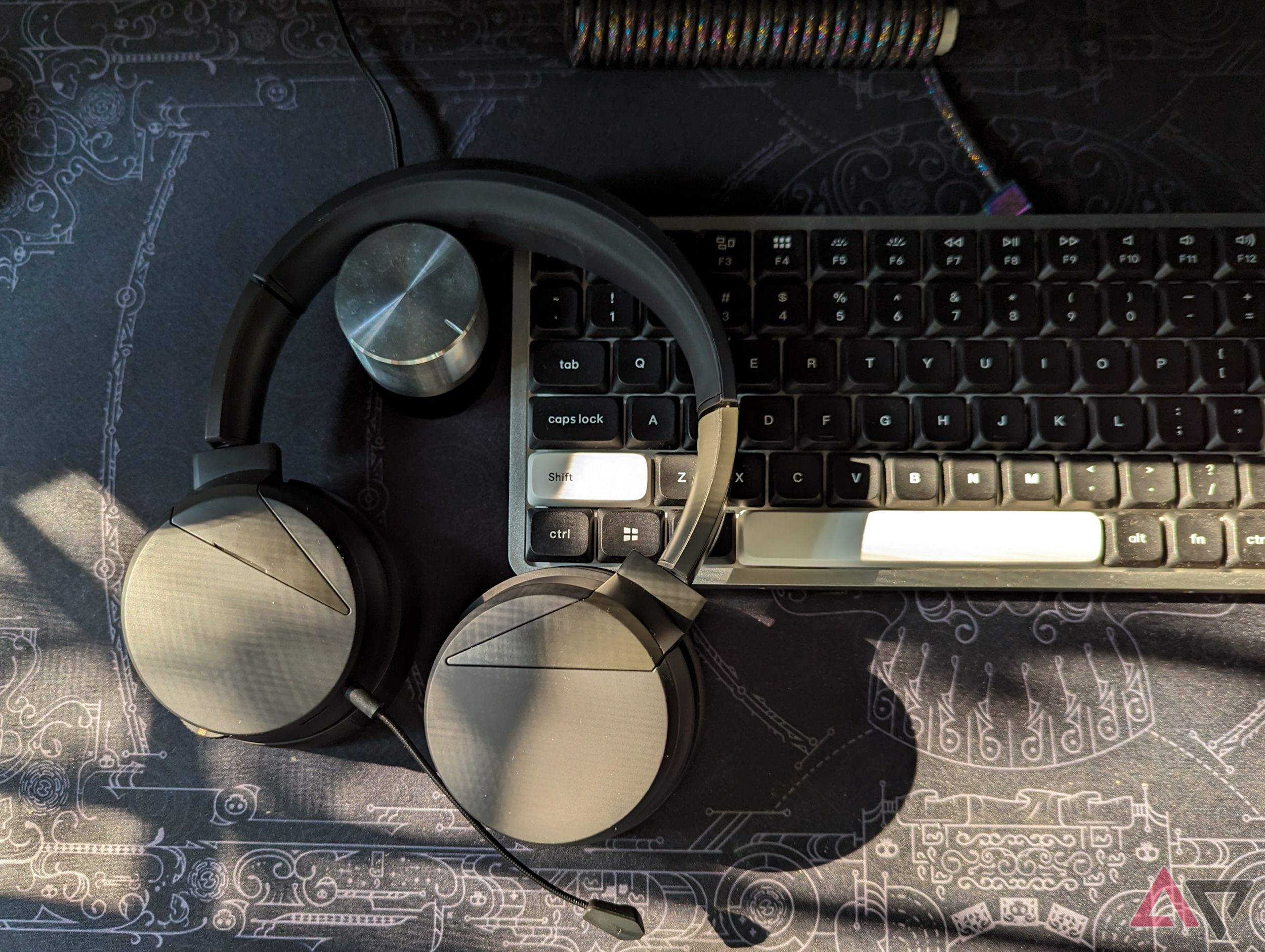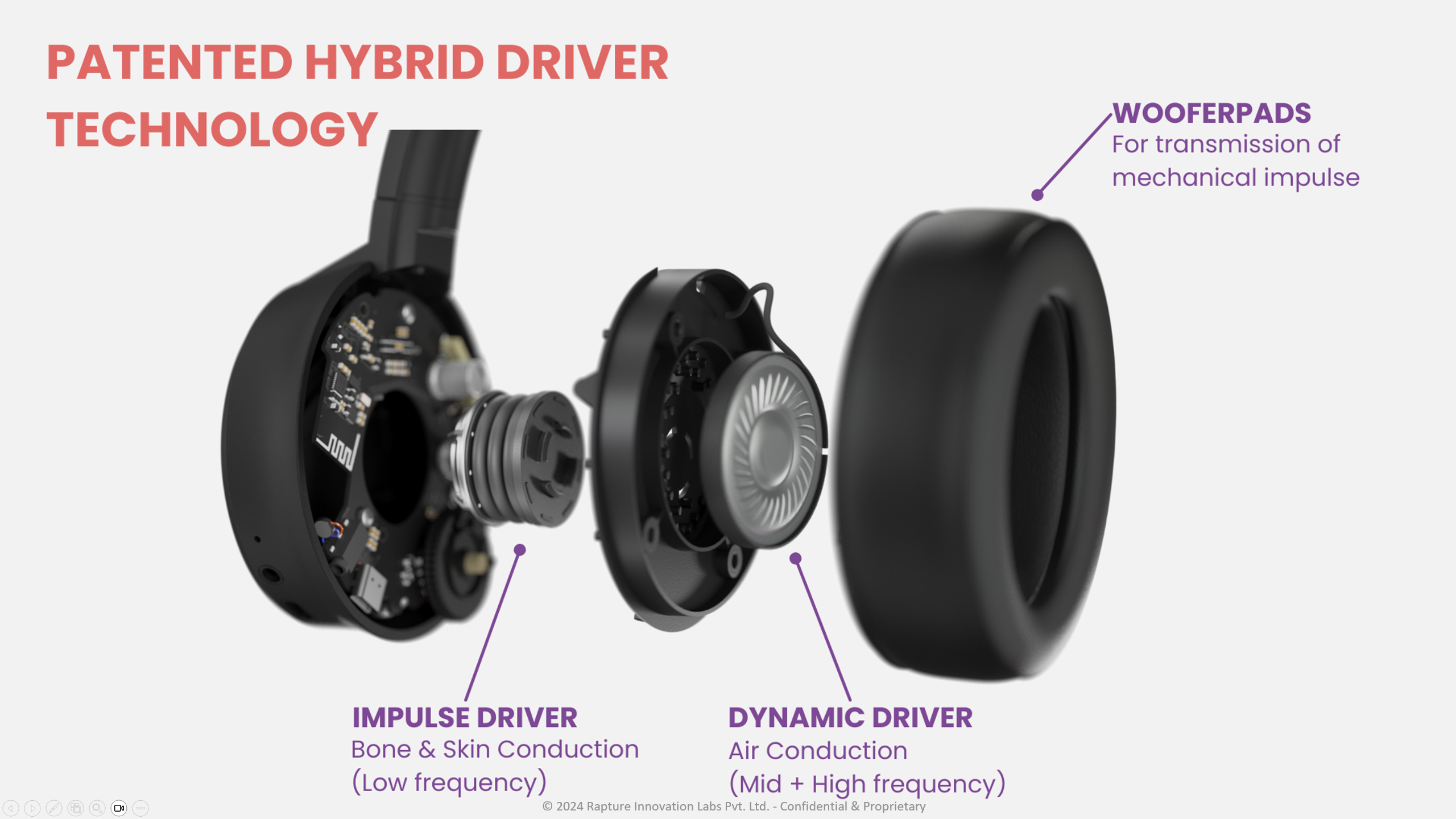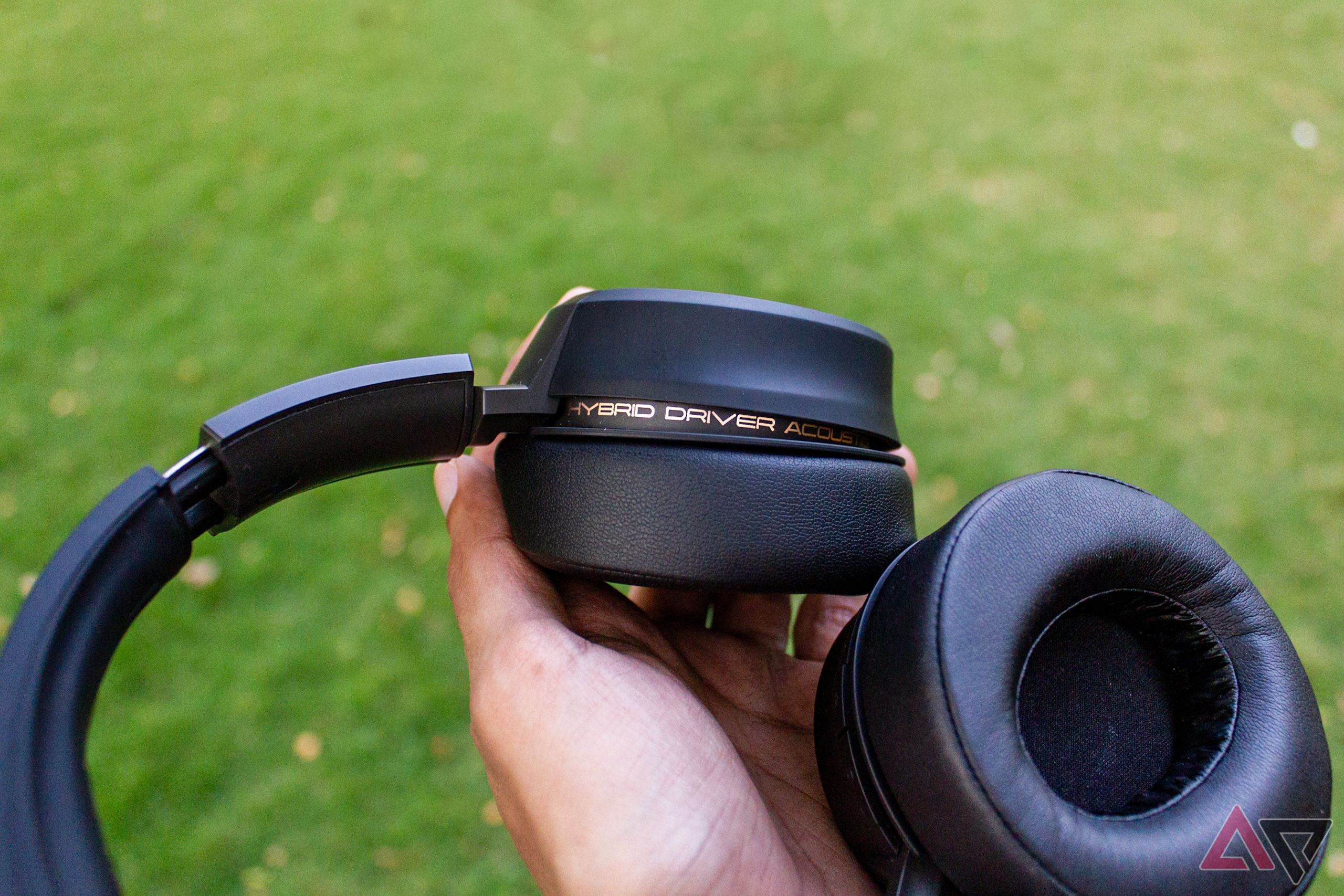The consumer audio market, specifically for headphones, has a few great products available, but it is perennially abuzz with new launches and often feels like a stark contrast against audiophile gear, with infrequent launches and classic gear still commanding a premium. Although mass production and the benefits of manufacturing processes like 3D printing have made IEMs more affordable, it’s easy to hurtle down a slippery slope of spending exorbitant sums chasing headphones that sound right for your needs. Lest I forget, the industry’s innovation has been limited to fits and starts for the last decade.
Entering a relatively stagnant industry without a catchy or well-marketed product might seem foolhardy, but two engineers from India, Navajith Karkera and Jagath Biddappa, took a leap of faith, but they weren’t planning on making headphones at first. What started out as a cool project to make audio accessible resulted in the duo’s first over-ear pair, known as Sonic Lamb.

Read our review
Sonic Lamb headphone review: All about that bass
These headphones do one thing, but they do it well
With a pair in hand, I was blown away by the creative use of dual-driver technology, but not in the conventional sense where frequency bands are relegated to separate drivers. I can only compare the experience of body conduction combined with conventional speaker drivers to bookshelf speakers carried on your shoulders — classic woody sound with tight and boomy bass magically emanating from a wireless plastic shell. Moreover, the cans offer an optional wired mode and cool features like four-step bass response adjustment, Hi-Res certification, a detachable boom mic, fantastic soft-touch materials all around, and simple twist-to-detach ear pads.
With a proposition so unique at a surprisingly accessible price, I sought a sit-down with Sonic Lamb co-founder and CEO Navajith Karkera to understand what it takes to innovate in a saturated market, how a product like the Sonic Lamb comes to be, and how much thought goes into every design decision.
Sonic Lamb didn’t start out wanting to make headphones
But once an audiophile, always an audiophile
Source: Sonic Lamb
Navajith Karkera’s father was a passionate audiophile
Let’s start from the beginning, where Karkera was brought up, and how his early years made an impact. “I had a very good association with music and sound because my dad is an audiophile, and he was very particular about audio sources and even speaker systems. We had this Denon system, and that’s how I grew up listening to good-quality sound.”
Fast-forward to Karkera’s engineering days from 2013, he relentlessly searched for good headphones that could recreate the home theater experience while away from home. “I found that music (on headphones) to be less immersive and life-like, it wasn’t full-bodied sound. There were some bass-heavy headphones, but they would sacrifice the instruments and vocals.” Well, that’s a problem many of us are all too familiar with in the consumer audio space. Most headphones tend to emphasize certain frequencies and drown out the rest.
Skip to 2014, Karkera was developing a transducer for hearing aids and helmets so people could listen to music or communicate without blocking out ambient sound entirely. “Both these use cases required us to bypass the ears and use alternate ways to perceive sound. In 2016, we pivoted towards developing a transducer capable of body conduction — a combination of bone and skin conduction — to perceive sound.” One fine Sunday in February 2019, the four-year-long research project’s Eureka moment came when Karkera slapped prototype transducers onto conventional headphones out of sheer curiosity.
“I felt like I listened to a full-blown speaker system because I could feel the bass and the sound.” A janky prototype headphone quickly made the rounds in Karkera’s circle of audiophile acquaintances, many of whom used high-end gear. “When they tried it, many of them were willing to pay for the ugly, bulky headphones too. We felt like we had built something that wasn’t (available) on other headphones.” This gave the duo concrete evidence that their creation was on the cusp of greatness.
Polishing prototypes to a shine
Letting the experts tune technicalities
Karkera registered Sonic Lamb in 2018 and shortly thereafter resorted to accessible manufacturing options such as 3D printing. This allowed the duo to create a prototype they showcased at a small booth at various local events. Feedback from these events and basic testing steered further refinement for the now-bootstrapping startup. By the end of 2019, the duo was fully invested in this project, determined to make it marketable. Then, Sonic Lamb was chosen for the SoundTech accelerator program by Sound Hub in Denmark, under the guidance of Peter Petersen, Sound Hub’s CEO and former Bang & Olufsen CTO.
Testing and development at Sound Hub, Denmark
“We got access to the gold standard of (headphone measurement) equipment, right from the ear pinna; it’s modeled for accurate audio perception. This period was critical for the company because it helped secure technical validation from industry greats. “Since the bass was handled by a dedicated impulse driver and delivered through bone and skin conduction, distortions were as low as 0.05%,” Karkera added excitedly, referring to the deviation between the audio frequency input and the perceived output, as recorded by the lab apparatus shaped to resemble human ears.
Innovating in a saturated industry
Number-crunching and good product design goes a long way
To put Karkera’s statistics into context without getting into the weeds of audiophile jargon, we need to understand frequency response curves — graphical representations of how headphones perform at various frequencies across the spectrum audible to humans. The “flat” tone curve audiophiles crave usually indicates the headphones don’t ‘color’ the sound, delivering it exactly as recorded by the artist.
However, engineers like Karkera designing headphones, define a custom frequency response curve quantifying what the signature sought, and iterate speaker hardware and other design parameters to resemble the target curve closely. In such cases, a deviation of just 0.05% from the desired response is a testament to the team’s skill, because most speaker drivers have single-digit percentage deviations from the target.
Pointing to frequency response charts for various headphones (seen above), Karkera said, “inconsistencies across frequencies are caused by fundamental issues with dynamic drivers which haunt the quality of audio production.” This is where unique solutions like Sonic Lamb’s have an opportunity to shine. While we weren’t equipped to verify Sonic Lam’s technical data, the charts also show a remarkable isolation of enhanced low-end response in the different listening modes, all without coloring the mids and highs.
I asked Karkera how IEMs with multiple drivers were far more popular and common than over-ear headphones with such setups. “Even if you have multiple drivers, the problem is how the dynamic driver itself operates, the involved acoustic load, and interference between the drivers due to the headphones’ form factor.” “The Sonic Lamb’s advantage is that the impulse driver is internally coupled to the ear pads, and it transfers the low-end response to the wearer through bone and skin conduction, and doesn’t use the ear.” “The pressure you feel in the beats isn’t air pressure, it is mechanical force… free of interference.”
That’s also why the Sonic Lamb ships with large ear pads designed to maximize physical contact with the wearer’s head. He also confirmed the company is currently experimenting with hardware variations for something bearing a closer semblance to conventional over-ear pads.
Delving deeper into the technical aspects of the headphone’s sound profile, Karkera explained the impulse driver was able to accentuate the perception of low-frequency sounds even at lower volumes, unlike conventional speaker drivers, which benefit from loudness because they need more current to move air for bass notes. The different media for sound transmission for the dual-driver setup helped achieve higher fidelity while minimizing listener fatigue.
It wouldn’t make sense for a start-up with few angel investors to make ‘just another headphone’ in a market where players have billions of dollars at their disposal
Sonic Lamb’s interesting design choices explained
A low-down into an engineer’s thought process
Shifting gears to discuss the internals, I asked Karkera why the company stuck with 40mm dynamic drivers instead of using larger ones like more audiophile-focused products from brands like Sennheiser, Focal Audio, and Audio-Technica because the Sonic Lamb already has a massive shell. “One thing is we aren’t targeting the hardcore audiophile because they are looking for a perfect neutral response. Secondly, larger drivers are better, but we benchmarked everything from 30 to 50mm drivers from various vendors and found some delivered lower distortion than others. So, we built an enclosure around the driver we selected, which measures 40mm in diameter.
Source: Sonic Lamb
He continued, “We selected a full-range driver, but it is optimized for control of frequencies above 200Hz. This helped us get less than 3dB variation from 200Hz up to 8kHz. Also, above 8kHz, the deviation doesn’t exceed 8dB.” In saying this, he made it clear the Sonic Lamb is for a convenience-oriented audiophile, and not a discerning one seeking the very best listening experience.
However, sometimes what’s on the inside doesn’t count unless you can deliver a well-rounded package. The competition is cut-throat south of $300 in the audio game, and Karkera knew it all too well. So, thoughtful additions like ENC mics, a detachable boom mic, and the replaceability of the wear-prone ear pads also factored into the design. “We wanted to make sure earpads are easily replaceable and accessible. We also added a detachable boom mic because, during COVID-19, we realized people were using headphones beyond entertainment, and they didn’t have good-quality microphones for meetings.”
When asked if the Sonic Lamb could be anyone’s “endgame” headphone, he said the various listening modes allow users to customize what the cans sound like because preferences are personal. However, this is “for consumers and prosumers,” and not professionals or athletes. While limited to the realm of recreational listening, Karkera is confident the Sonic Lamb could be the last pair you’ll need for music, movies, podcasting, and perhaps even gaming. However, the company plans to develop products tuned for individual niche use cases. So expect a range of options soon.
Naturally, this is accompanied by the question of durability. In a world where products are designed to fail or demand expensive repair just outside the warranty period, Sonic Lamb wouldn’t be an endgame product if it wasn’t built to last. Karkera said the material choices are designed to last long, but the durability depends a lot on the usage conditions of the wearer. Karkera’s personal unit he used on the call was more than two years old, he said.
As for design changes, the audio market is currently torn between open-back and closed-back designs with the latter offering better isolation from surroundings, making it a popular choice. However, since we’ve likened the Sonic Lamb to conventional bookshelf speakers, I asked Karkera why the team didn’t go open-back. Letting the ambient sound in has its demerits, but it also lends a natural, resonance-free tone with the benefit of better ventilation. Karkera added, “yes, open-back is more desirable, but that would be geared more towards proper audiophiles,” such as those with dedicated listening rooms. “We want to offer those listeners an analytical experience like a studio monitor would, with custom rolloffs for the subwoofer and such, because private listening isn’t a concern for them.”
Interestingly, he revealed, “the silicone liner separating the earcup from the ear pad prevents air from locking inside, giving the Sonic Lamb a slightly more open sound perception than conventional closed-back cans. Beyond that, we felt it would compromise the privacy of our target audience.” To this effect, the Sonic Lamb offers multipoint connectivity, but “noise-canceling affects the quality of audio production perceptibly. At this price point we could have added it anyway, but we found it is used more as a marketing statement, but lacks quality, unless you’re buying the Sony WH-1000 XM5 or Bose QuietComfort series. Otherwise, the difference is minimal. We want to offer noise cancelation, but we want to do it right with proper tuning for our mixed-medium drivers. For now, the focus is on the accuracy of the audio production.”

Related
Sony WH-1000XM5 review: The ANC headphones to beat
Class-leading ANC, now in a prettier package
A new product in an industry dominated by giants
There’s so much more to come
With the technicalities locked down, Karkera explained how challenging it was to source components in India, coordinate with manufacturers, and ship a product to expectant buyers who supported the crowdfunding campaign. Right around this time, the pandemic made it harder to source the silicon required for the internals. Nonetheless, Karkera told me Sonic Lamb was steadfast in delivering value to customers, and affordability of the product was a secondary concern — “giving customers something unique that other headphones on the market don’t offer.”
I am addicted, people in our team are addicted. It’s difficult for us to appreciate other headphones.
Although Sonic Lamb never started out as a headphone company, the project snowballed from the crowdfunding campaign around November 2022, followed by an official retail launch in October 2023. Karkera proudly says the company has shipped orders to 40 different countries, and the company’s first headphones have left a lasting impression on buyers and reviewers alike. I was definitely impressed, and he assured me there’s a lot more in the offing.
Source link





